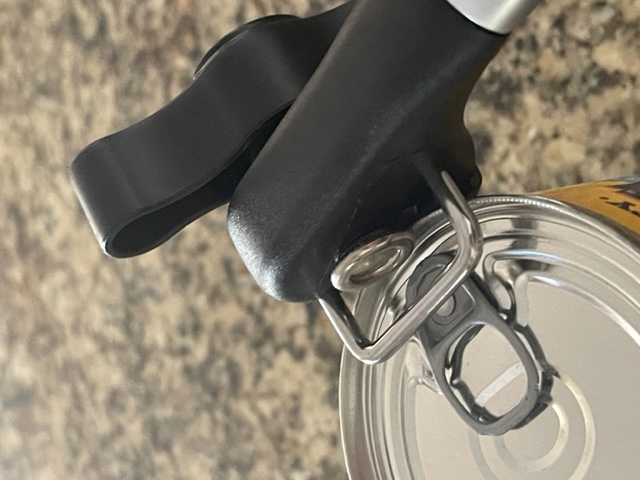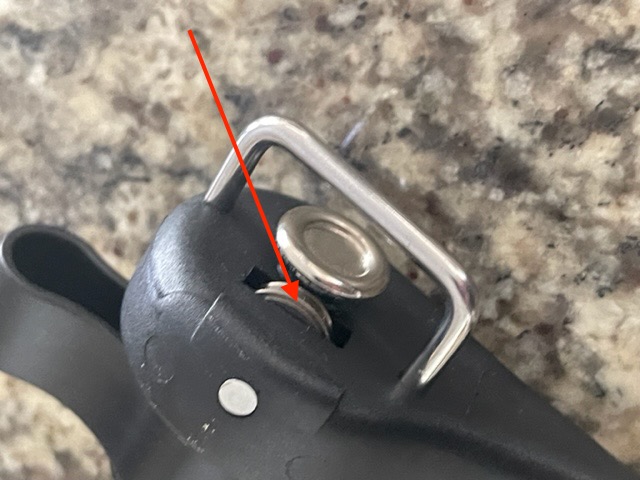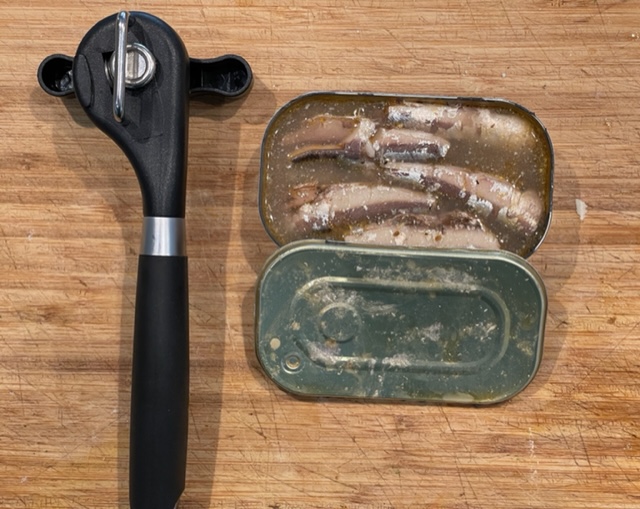A better mousetrap.
For an index of cooking articles on this blog click here.
‘Nerd’ is a derogatory term used by the incurious to describe anyone with an inquiring mind. My friends tend to be nerds. Call me one and I want nothing to do with you for yours is a second rate mind. I have the same contempt for users of this noun as I do for people who tell me they cannot set the clock on their electric gadget. Can’t they read the manual?
Note that membership in my exclusive club does not dictate advanced math skills or a postgraduate degree. What it does mandate, however, is curiosity. Show me a successful person and I will show you one who is curious.
As someone who graduated engineering school at the top of his class with ease in the study of ergonomics (we called it ‘occupational psychology’ back then) I have long been interested in understanding how machines work and also greatly frustrated how often they work poorly. So when a better mousetrap comes along, in this case a can opener, I am interested. “With ease” you ask? When something fascinates you, the design of the man-machine interface in this instance, it’s easy.
I would suggest that no commonly encountered field suffers from poorer ergonomic design than the kitchen. Few ‘standard’ tools found therein seem to even be aware of this field of engineering.
You can learn all about the history of cans and openers in this excellent Technology Connection video well presented by someone with an inquiring mind. A fine, inquiring mind.
The presenter relates, in wonderment, the fact that the side-opening can opener has never really caught on. You get that technology in some electric can openers (about as poor a dedication of engineering effort as the electric carving knife) but the humble $10 hand held device is largely unknown. Yet it is superior to the traditional design which cuts into the top of the can leaving deadly edges for your fingers and coating the cutting wheel in the can’s contents.
The design I am referring to can be had for just $10.
And if the traditional cutter exposes nasty sharp edges to your fingers, the pull-off top on cans with a key is even worse. No matter how hard I try I still occasionally cut myself on these and they invariably need great effort to remove, not to mention the need for a tool to pry the key up or risk damaging your manicure. Bad, bad, bad.
You want to get the linked model of the can opener, not the one with the L-shaped extension arm with a magnet attached. First, there is no need for a magnet to remove the severed lid. Second, that magnet interferes with the pull-open key on cans thus equipped, rendering it useless. How do I know this? Please spare me the embarrassment of answering.

No interference with the key.
The cutting wheel makes no contact with the can’s contents:

The cutting wheel.
Note that the contents of the can are nowhere near the cutting wheel.
The arrow indicates marginal contact of the
cutting wheel with the inside of the lid’s seam.
How about those rectangular sardine tins with those deadly pull-off tops?

No problem with rectangular tins.
And be assured, it is impossible – impossible! – to cut yourself on any newly exposed edge on either the lid or can after using this opener.
Few things in a kitchen are more disgusting than traditional can openers with their cutting wheels encrusted with the contents of who knows how many cans past. And that legacy, replete with bacteria, is waiting to infect the contents of the next can you open. Yes, I always washed mine, but really, that should not be necessary in a properly designed tool.
Drawbacks? Because you are cutting through one layer of a seam which is considerably thicker than the surface of the lid (check the video), the torque required to turn the cutting wheel is, I estimate, three times as great as with traditional models. Meaning it’s non-trivial. No problem for me but this may be an issue for those with arthritic joints.
Secondly, because the can opener cuts from the side of the lid not through the top, you cannot see the cut as you operate the tool. Further, it’s very smooth, so you don’t get that ‘click’ at completion that you do with the traditional style of opener. So as to minimize effort, meaning you want to stop turning the handle the minute you have completed a circle, I make a note of where I have started the cut and wait for that start point to come around again.
Overall, this tool is so superior in every conceivable way I do not see going back to the traditional can opener, ever.